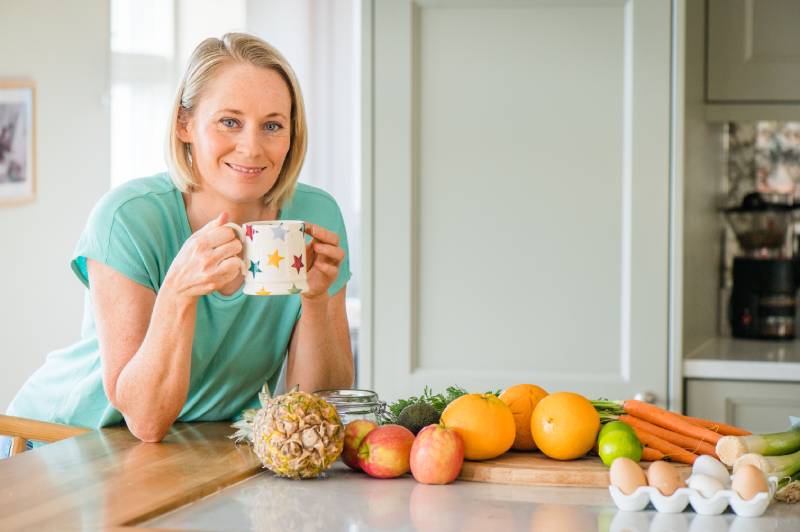
Food portioning is a huge asset in achieving your health goals. It can be a difficult element to get right but it can often play a big role in whatever your goals are; be it weight loss, weight maintenance or weight gain. I’ll share some information on this topic that may be helpful. Recipe wise it’s a delicious chicken and butternut squash salad. A healthy, well balanced and tasty dinner or lunch option.
How much food should be on my plate?
Portion sizes are dependent on how much of each food component to choose and how much space this should take up on a plate. It is recommended that your plate is the size of your hand, from the base of your palm to your fingertips, as a way to visually understand.
- Use a plate that is the size of your hand.
- Be aware of your hunger.
- Look at your food for lots of colour on the plate.
- Aim to hit all the food groups
- Try to avoid skipping meals or snacks – ensure you eat 3 meals and 2 snacks per day
If your goal is to Maintain/Drop weight:
- 50% Vegetables
- 25% Protein
- 25% Carbohydrates
- 1 tbsp of healthy fats.
If your goal is to Increase weight:
- 50% Vegetables
- 25% Protein
- 25% Carbohydrates
- 2-3 tbsp of healthy fats.
You can also increase your carbohydrates if preferred by adding an extra few tbsps of your carbohydrate source.
Additional thoughts to consider when portioning out your food:
- If you are very active, it is important to increase each macronutrient group a little
- Be mindful of how much oil you are using to cook your food in, if the pan gets too dry add a little water.
- Be aware of the energy content of any drinks you consume throughout the day.
- If you are post exercise, and if you feel you need a little extra protein and energy to recover, consider adding a small glass of milk and a piece of fruit or a simple chicken sandwich to increase the carbohydrate source of the meal.
Top Tips for Positive Changes in Body Composition:
- Hit your protein targets This is important because adequate protein can help prevent muscle loss and maximise fat loss when losing weight. It’s also satiating so can help keep you feeling fuller for longer.
- Focus on good food sources: Really focus on the foods that keep you full and make you feel better long term. Try to swap high sugar, high fat, processed foods which tend to be easy to overconsume, with wholefoods which are higher in fibre and protein. You will feel fuller for longer and have more energy. This is a much better approach for long-term health
- Aim to move more: NEAT (non exercise activity thermogenesis) is a key area to focus on. It can account for anywhere from 15-50% of our total energy expenditure each day and includes all activity outside of planned exercise like parking further from the entrance. Consider can you walk more – phone meetings with headphones in while walking is a good idea. I aim for 10,000 steps a day
- Quality of life matters: Diets only work if you can stick to them. If someone gives you a plan that you can’t see yourself doing long term then it’s pointless. Build in things you love to make the healthy changes more enjoyable and sustainable.
- Look at the big picture: Factors like sleep and stress can have a huge impact on how we function. They can make our overall diet and lifestyle more or less conducive to weight loss. These habits can help to create an environment for increased health and a sustainable calorie deficit for weight loss. Sleep deprivation increases hunger levels and makes it more difficult to make healthy choices when we eat.
